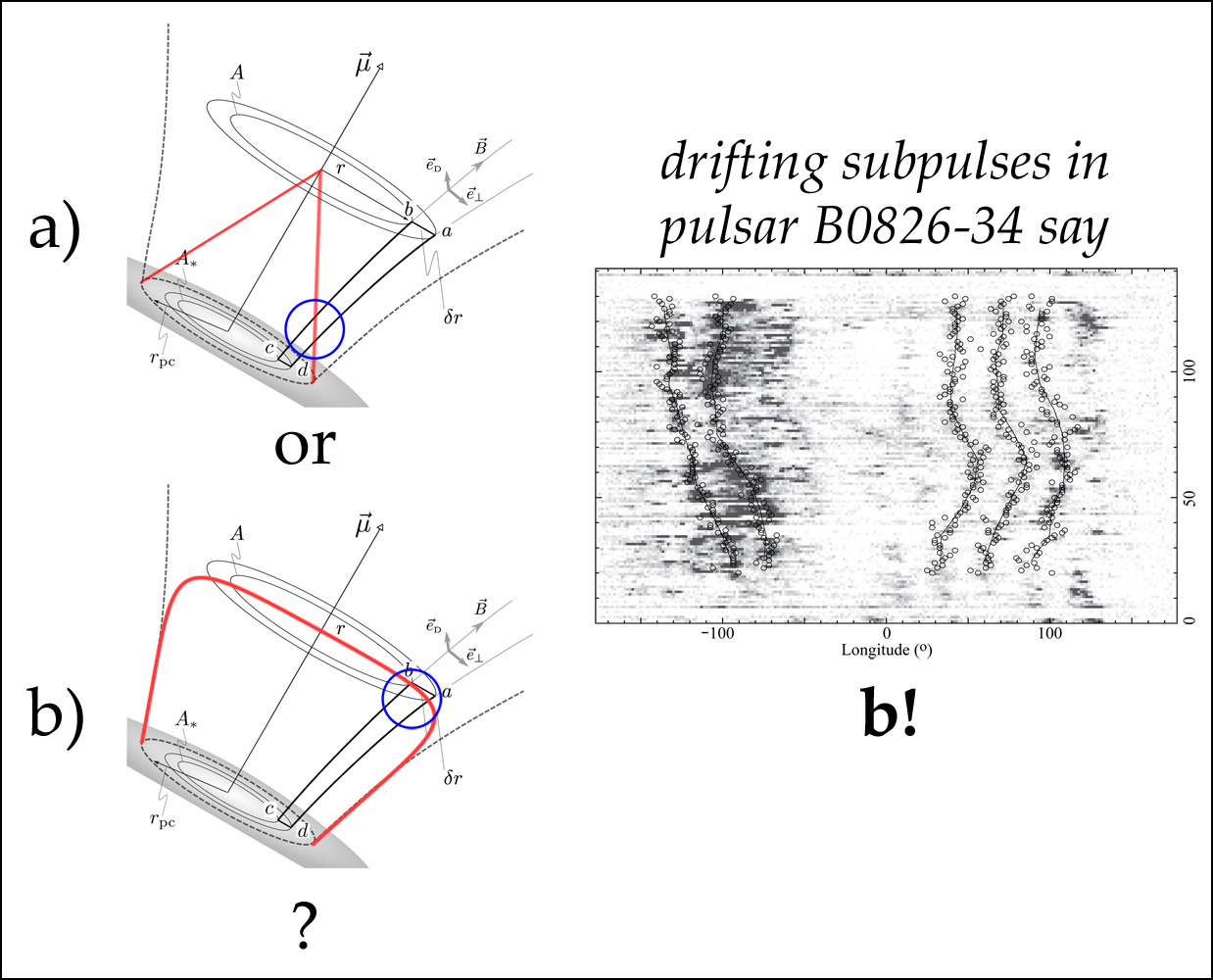Daily Image
02-05-2012Plasma rotation and drifting subpulses in pulsars
| Submitter: | Joeri van Leeuwen |
| Description: | Just like a super collider, radio pulsars accelerate particles. These then create the radio emission we see. One of the very few ways for inferring the accelerating potential, is through the measurement of "subpulse drift", the variation between subsequent pulses. For decades such measurements have, however, been off by over an order of magnitude compared to the predictions by the standard model -- a) in the image above. In a paper accepted for ApJ on April 20 (van Leeuwen & Timokhin 2012), and presented at the ERPM conference on April 25, we have more precisely derived the allowed behavior of pulsar accelerating regions -- illustrated as b) in the image above; which we find to be in excellent agreement with high-quality subpulse-drift measurements taken at the Parkes Telescope (on the right in the image above). PSR B0826-34 is a very broad-profile pulsar. Its pulse profile basically spans 360 degrees -- it is always on. B0826-34 displays drifting subpulses over more than half of its pulse period. At times, up to 9 drift tracks are visible. Most remarkable is the occasional outright reversal of drift direction. The combination seen in B0826-34, of a broad profile that cuts through different lines of sight from the magnetic pole, and a system of highly varying drifting subpulses, is unique. In 20 hours of Parkes data we measured the variations in subpulse drift rate more accurately than ever before. We combine these measurements with a geometrical model of the pulsar, to measuring the drift rate at two different distances from the pulsar magnetic pole. This gives us a value for the acceleration within the blue circles in a/b). We next compare our measures value to a) the standard model, where the acceleration diminishes linearly with radius; and b) our more detailed model, in which the acceleration change are much flatter. We measure variation of less than 1% -- i.e., model b). This provides new, useful constraints on our understanding of plasma generation in pulsars. |
| Copyright: | JvL |
| Tweet |  |
